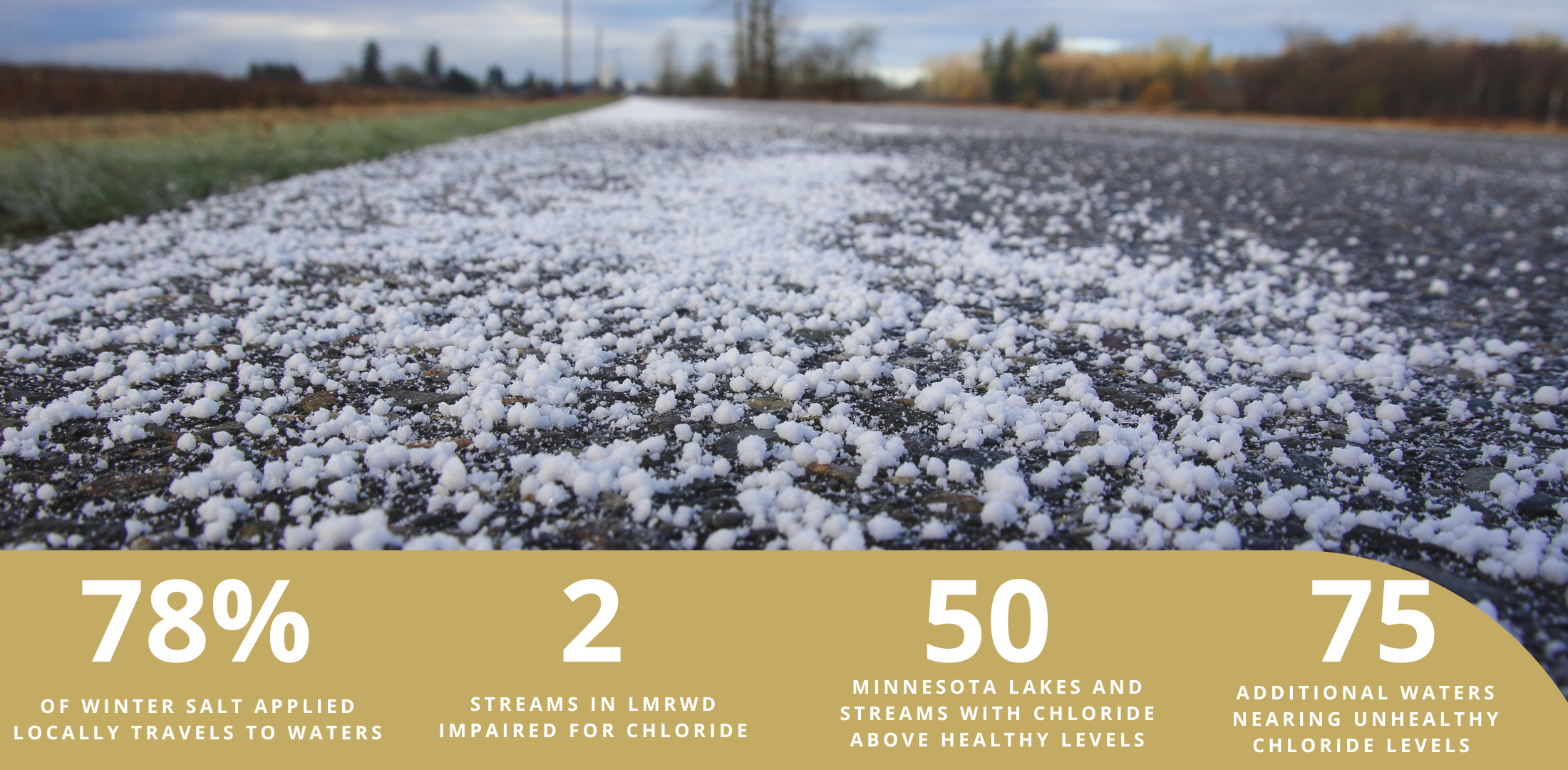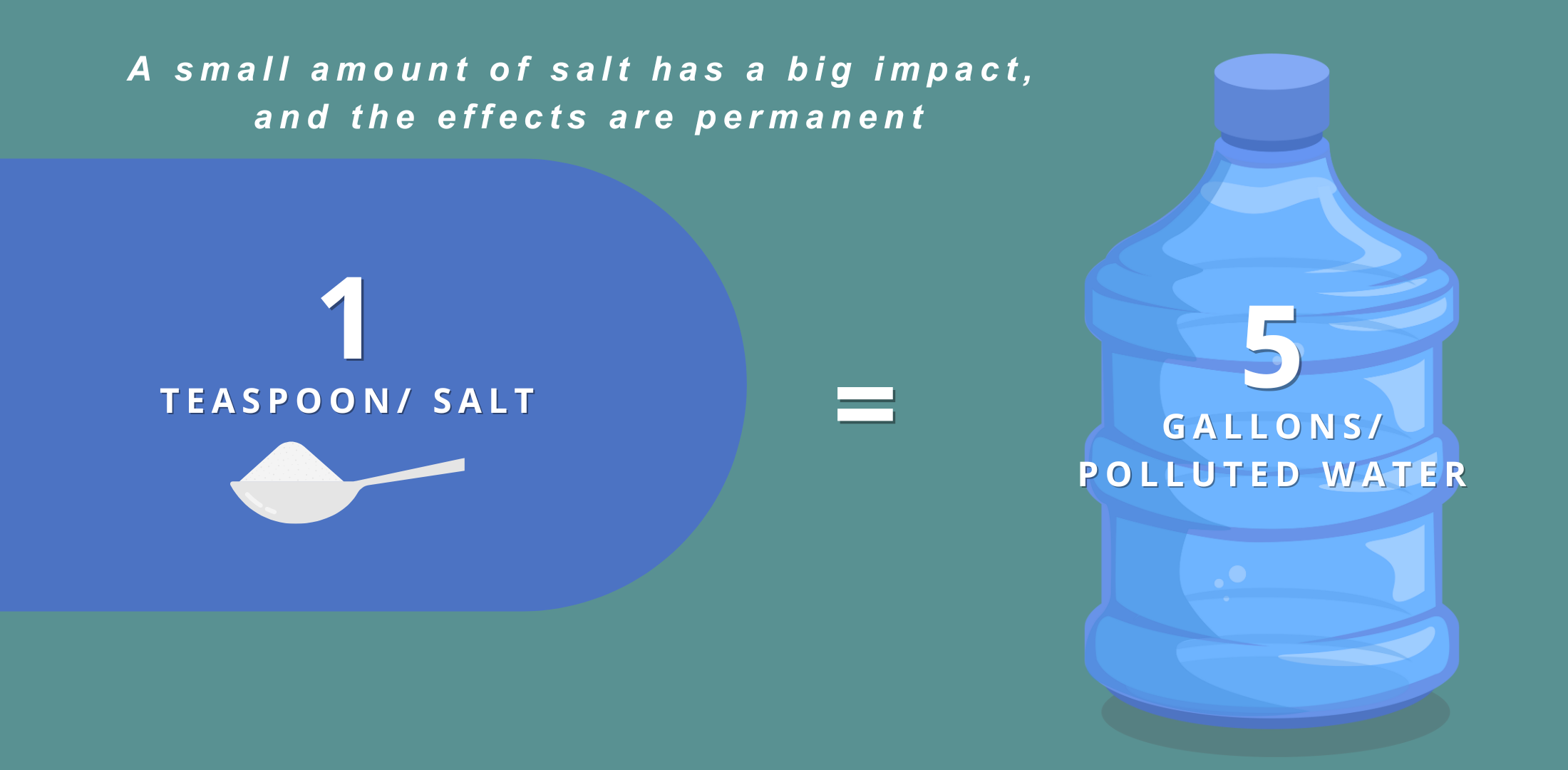Understanding the Issue
Chloride from salt is polluting our local waterbodies at increasing rates. It drains to our lakes, rivers, and streams from sidewalks and roads in the winter, from home water softeners, from fertilizers in fields and yards, and other sources. Chloride is harmful to plants, fish, and other aquatic life —and, unfortunately, it does not take much to create issues. Just one teaspoon of salt is enough to pollute five gallons of water. When snow and ice melt, chloride flows into the nearest storm drain and into the water we use for swimming, fishing, and drinking. Currently, 50 Minnesota lakes and streams have chloride levels above the state standard to protect fish and other aquatic life with 75 more at risk for exceeding the standard. Salt is a permanent pollutant. There is no easy or cost-effective way to remove chloride from our lakes, rivers, or groundwater. Learn more about how your actions can help keep water clean!


Solutions
Chloride pollution is dangerous because the effects are permanent. Make sure to learn and follow the following steps to successfully manage salt output. Share these with neighbors, family, and friends to multiply your personal impact.

Resources to Learn More and Act
-
Smart Salt Training
-
Chloride Information - Minnesota Pollution Control Agency
-
Statewide Chloride Management Plan - Minnesota Pollution Control Agency
-
Winter Salt Watch Progam - Izaak Walton League of America
-
Low Salt No Salt Campaign